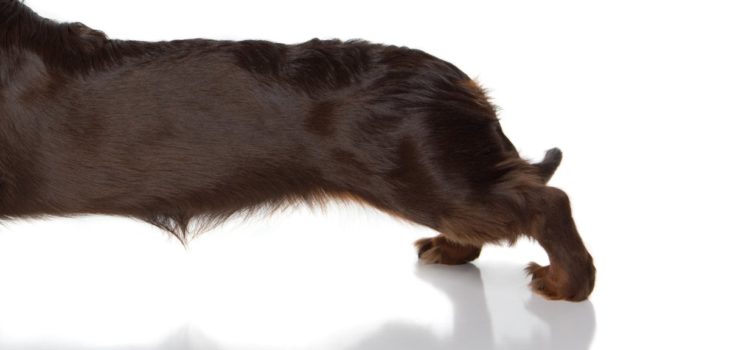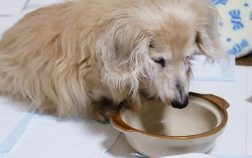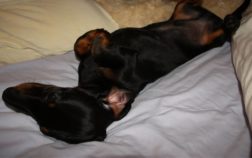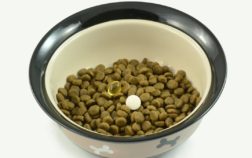Living with a tiny four-legged cowboy may sound unbearably cute but it’s not all fun and games. Pes varus in dachshunds and the leg problems it brings are unfortunate but thankfully not untreatable. Especially in recent years, veterinary surgeons have made huge strides in treating the condition but early detection is still crucial. So, here’s what you need to know about Pes varus and how to care for your dog.
What Is Pes Varus In Dachshunds?
Pes varus translates from Latin as simple “Foot inward”. And that’s exactly what Pes varus does to your dog – it curves your Doxie’s hind legs inward. This can make their walk seem silly and adorable at first but it also impedes their movement, causes pain, and can spiral into other skeletal issues, including the infamous back problems dachshunds suffer from such as Intervertebral Disc Disease (IVDD).
Things aren’t supposed to progress that far, of course. Your dog will have to spend quite a lot of time with a worsening Pes varus until other skeletal deformities start to develop as well. And Pes varus causes pain in and of itself. So, if you don’t want your beloved pet to live in constant pain, it’s best to take care of the Pet varus as soon as possible.
Click Here to Get Info About:
- What Are The Key Characteristics Of A Short Haired Mini Dachshund Puppy
- Do Dachshunds Get Cold Easily And What Can You Do About It?
How Can You Treat Pes Varus In Dachshunds?
Fortunately, recent veterinary surgical advances have made Pes varus treatable. It does require surgical intervention, however, in the form of a corrective osteotomy. This is a type of surgery done with a dome saw blade that cuts the leg bone of the dog at the level of the deformity and essentially reshapes the bone, allowing the dog to have the correct leg angle, shape, and walk going forward.
This can sound scary and it technically is. However, good veterinary surgeons today can perform the procedure with a near-100% rate of success. What’s more, the sooner you catch the Pes varus by observing your dog’s walk and leg shape, the easier the procedure is to perform, the higher the chances for success, and the shorter the recovery time.

What Causes Pes Varus In Dachshunds?
Pes varus in dachshunds, as well as in other dogs, happens when the shinbone growth plate gets closed prematurely and leads to the asymmetrical growth of the tibia,
But why does the shinbone growth plate close prematurely in the first place? The main cause is believed to be hereditary – an autosomal recessive type of gene inheritance that affects about 1% of dachshunds and significantly fewer dogs from other breeds.
Unfortunately, while the condition is genetically inherited, there are no genetic tests yet that can spot it early on. So, the only way to try and make sure that you’re not getting a pup that’s in risk of developing Pes varus is to know its parents. This is one of the many reasons why we always recommend steering clear of pet shops and the puppy mills that supply them with dogs.
Instead, if you don’t want to adopt a dog from a shelter, buy your pup from a reputable breeder. Such breeders won’t just offer health and hereditary certificates for their dogs but will also let you meet their parents and litter, and will give you detailed information and certifications for the parents as well. This is the best way to make sure that the risks for Pes varus and other inherited health problems are as low as possible.

Conclusion – Pes Varus In Dachshunds
All in all, Pes varus is a very annoying and unfortunate health condition that quite a few dachshunds can suffer from. Even though the estimated number of affected dogs is less than 1% for dachshunds and even less for other breeds, that’s still quite a lot of canines. So, don’t ignore your dog’s crooked walk and talk with your vet if you notice anything out of the ordinary.
FAQ’s
[rank_math_rich_snippet id=”s-93d30a73-290b-4f1e-913f-b3df5809d018″]




